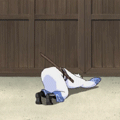After much deliberation, let's introduce the brand new Zero-G Format!
In this format, only Zero-G Stadiums (Attack, Defense and Balance Type) can be used, and all Metal Fight Beyblades are legal in them. Due to the continuity in the parts used both in the Zero-G Format and in the Standard Format, tournaments following the Zero-G format are going to be processed in the current Beypoint System. Past trials have shown that it's relatively easy to adapt quickly to these new exciting swaying stadiums, so let's do it!
Here are a few rules that were added to the Universal Rulebook which are specific to Zero-G:
Well, let the testing formally begin! What'll be top-tier in the tournaments? What funky launching techniques can we come up with?
More cool announcements coming up too!
In this format, only Zero-G Stadiums (Attack, Defense and Balance Type) can be used, and all Metal Fight Beyblades are legal in them. Due to the continuity in the parts used both in the Zero-G Format and in the Standard Format, tournaments following the Zero-G format are going to be processed in the current Beypoint System. Past trials have shown that it's relatively easy to adapt quickly to these new exciting swaying stadiums, so let's do it!
Here are a few rules that were added to the Universal Rulebook which are specific to Zero-G:
- A perfectly flat material such as cardboard with no irregularities in its surface must
be used below each stadium. Surfaces which are naturally flat, like laminated wood
floors, are good by themselves.
- Before each round, the stadium must be steadied by the judge.
- Players should exhibit strong efforts not to touch the stadium during the launch, or
at any other moment either.
- Aside from the traditional methods of winning, a Blader has won a match the
moment the opponent's Beyblade starts tumbling over, not once its top face touches
the stadium floor (in case this imbalance actually knocks the other Blader's
combination before the flip is over). It is likely that the Beyblade has stopped
completing revolutions anyway, at that point.
- A Beyblade is considered out, notably, once all parts of the Beyblade are no longer
contained within the stadium. In the case where a Beyblade gets momentarily stuck
in an exit and some pieces of it stick out from the hole, the Beyblade is still legally in
play - even if a part of the Beyblade touches the ground.
- Beyblades must be launched no higher than thirty centimetres above the Stadium
Cover. The Stadium Cover is considered legal play area.
Well, let the testing formally begin! What'll be top-tier in the tournaments? What funky launching techniques can we come up with?
More cool announcements coming up too!




































































![[Image: gPp4aQW.png]](https://i.imgur.com/gPp4aQW.png)













































![[Image: zerog.jpg?t=1344883418]](https://i80.photobucket.com/albums/j189/parkadge/zerog.jpg?t=1344883418)






![[Image: UwZsp7A.png]](https://i.imgur.com/UwZsp7A.png)











![[Image: AqKPC.jpg]](https://i.imgur.com/AqKPC.jpg)







![[Image: 2u76mnk.jpg]](https://oi41.tinypic.com/2u76mnk.jpg)












![[Image: signature-wbo.jpg]](https://www.trymykungfu.com/beyblades/signature-wbo.jpg)





![[Image: vwa_copy3_by_elcesplooshe_daejy2u-fullvi...Za8ANFHK5M]](https://images-wixmp-ed30a86b8c4ca887773594c2.wixmp.com/f/0779b042-834a-4ac6-9292-fab88a9af9cb/daejy2u-70e51d94-acbe-4593-ad69-5434d834b672.jpg/v1/fill/w_1024,h_317,q_75,strp/vwa_copy3_by_elcesplooshe_daejy2u-fullview.jpg?token=eyJ0eXAiOiJKV1QiLCJhbGciOiJIUzI1NiJ9.eyJzdWIiOiJ1cm46YXBwOjdlMGQxODg5ODIyNjQzNzNhNWYwZDQxNWVhMGQyNmUwIiwiaXNzIjoidXJuOmFwcDo3ZTBkMTg4OTgyMjY0MzczYTVmMGQ0MTVlYTBkMjZlMCIsIm9iaiI6W1t7ImhlaWdodCI6Ijw9MzE3IiwicGF0aCI6IlwvZlwvMDc3OWIwNDItODM0YS00YWM2LTkyOTItZmFiODhhOWFmOWNiXC9kYWVqeTJ1LTcwZTUxZDk0LWFjYmUtNDU5My1hZDY5LTU0MzRkODM0YjY3Mi5qcGciLCJ3aWR0aCI6Ijw9MTAyNCJ9XV0sImF1ZCI6WyJ1cm46c2VydmljZTppbWFnZS5vcGVyYXRpb25zIl19.GJIQK2sXAJm5ScpS3pSVJ8KrA6Ru9qtE4Za8ANFHK5M)












